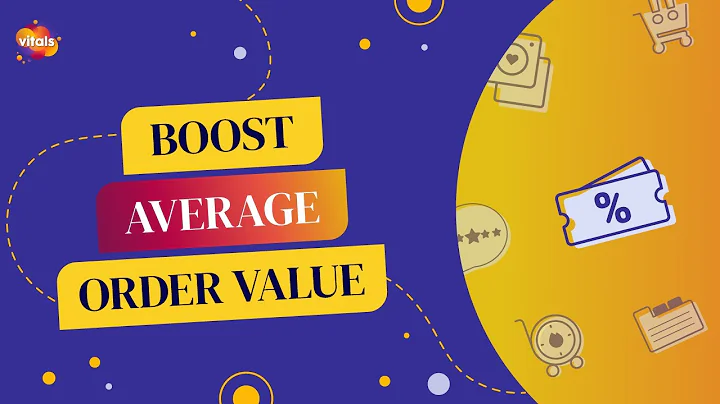Unlocking the Power of A/B Testing for Optimal Campaign Performance
Table of Contents
- Introduction
- Understanding A/B Testing
- Benefits of A/B Testing
- How to Set Up an A/B Test
- Types of A/B Tests
- Audience-based Tests
- Returning Visitors vs. New Visitors Tests
- Marketing Channels Tests
- Creative Tests
- Coupon Tests
- Call to Action Tests
- Display Type Tests
- Analyzing A/B Test Results
- Incorporating High-Performing Elements
- Limitations of A/B Testing
- Conclusion
Introduction
In the world of digital marketing, finding the right strategies to optimize campaign performance is crucial. A/B testing is a powerful technique used by marketers to compare and analyze different variables within their campaigns. By conducting controlled experiments, marketers can gain a better understanding of what works and what doesn't, allowing them to optimize their strategies for maximum effectiveness.
Understanding A/B Testing
A/B testing, also known as split testing or bucket testing, involves creating two or more variations of a campaign and testing them against each other to determine which performs better. It allows marketers to make data-driven decisions by comparing the response rates, conversions, or other metrics of each variation.
Benefits of A/B Testing
There are several benefits to conducting A/B testing in digital marketing campaigns. First and foremost, it provides valuable insights into customer behavior and preferences. By testing different variables such as audience segments, marketing channels, creative elements, coupons, call to actions, and display types, marketers can gain a deeper understanding of what resonates with their target audience.
Another benefit of A/B testing is the ability to optimize campaign strategies. By analyzing the test results, marketers can identify high-performing elements and incorporate them into their original campaign. This iterative approach leads to continuous improvement and better overall campaign performance.
How to Set Up an A/B Test
Setting up an A/B test is a straightforward process. Firstly, select the A/B test option from your campaign management platform. Choose a name for your experiment that reflects the variable you're testing, such as testing different locations or audience segments. Select a base campaign as the control group for your test.
Once the test settings are established, you can start creating variations. It is recommended to start with one or two variations to simplify the test and ensure clear results. Duplicate the base campaign and modify the specific variable you want to test. For example, if testing different countries, modify the location settings accordingly.
After creating variations, adjust the test settings such as the duration or the number of participants to be included in the test. Start the test and monitor the data for each variation. Analyze the results to determine the best-performing variation.
Types of A/B Tests
There are various types of A/B tests that marketers can utilize to improve campaign performance. Here are some common types:
1. Audience-based Tests
Comparing the response rates of different audience segments, such as visitors from different countries or demographics.
2. Returning Visitors vs. New Visitors Tests
Analyzing the behavior and conversions of returning visitors compared to new visitors.
3. Marketing Channels Tests
Testing the effectiveness of different marketing channels, such as email marketing versus social media advertising.
4. Creative Tests
Experimenting with different creative elements, such as design layouts, colors, or images in display ads.
5. Coupon Tests
Comparing the impact of different coupon offers on conversion rates, such as a 10% coupon versus a 20% coupon.
6. Call to Action Tests
Testing different calls to action, such as signing up for a newsletter versus getting a discount coupon.
7. Display Type Tests
Comparing different display types, such as pop-ups versus fly-out campaigns, to determine which generates better results.
Analyzing A/B Test Results
During an A/B test, it is essential to monitor and analyze the results to draw meaningful conclusions. Metrics such as conversion rates, sign-ups, or engagement should be compared between the control group and the variations. Statistical significance should also be considered to ensure reliable results. Tools and platforms offer in-depth analytics to facilitate this analysis.
Incorporating High-Performing Elements
Once the A/B test results are analyzed, marketers can extract valuable insights to improve their ongoing campaigns. The winning variation can be merged with the original, incorporating the high-performing elements into the overall strategy. This continuous optimization ensures that the campaign evolves based on proven success factors.
Limitations of A/B Testing
While A/B testing is a valuable tool for optimizing digital marketing campaigns, it is important to acknowledge its limitations. A/B tests are based on the assumption that the tested variables have a direct causal relationship with the observed results. However, there can be confounding variables or external factors that impact the results.
Additionally, A/B testing requires significant traffic or a sizable audience to generate statistically significant results. Small sample sizes may lead to inconclusive or unreliable outcomes.
Conclusion
A/B testing is a powerful technique that allows marketers to make data-driven decisions and optimize their digital marketing campaigns. By comparing different variables and analyzing the results, marketers can gain valuable insights into customer behavior and preferences. Incorporating high-performing elements ensures continuous improvement and better overall campaign performance. However, it is essential to consider the limitations of A/B testing to interpret results accurately.
Looking to improve your campaign performance? Try A/B testing and unlock the potential for higher conversion rates, engagement, and ultimately, business success.
Highlights
- A/B testing is a valuable technique for optimizing digital marketing campaigns.
- By comparing different variables and analyzing results, marketers gain insights into customer behavior.
- Incorporating high-performing elements leads to continuous improvement in campaign performance.
- A/B testing has limitations, such as the need for significant traffic and possible confounding variables.
FAQ
Q: What is A/B testing?
A: A/B testing is a technique used by marketers to compare different variations of a campaign to determine which performs better.
Q: How does A/B testing help in optimizing campaigns?
A: A/B testing provides valuable insights into customer behavior and preferences, allowing marketers to make data-driven decisions and optimize their strategies for better performance.
Q: How many variations should I test in an A/B test?
A: It is recommended to start with one or two variations to simplify the test and ensure clear results.
Q: What type of elements can be tested in an A/B test?
A: Almost any editable component of a campaign can be tested, including audience segments, marketing channels, creative elements, coupons, call to actions, and display types.
Q: How do I analyze A/B test results?
A: A/B test results should be analyzed by comparing relevant metrics such as conversion rates or sign-ups between the control group and variations. Statistical significance should also be considered.
Q: What should I do with the winning variation from an A/B test?
A: The winning variation can be merged with the original campaign, incorporating the high-performing elements into the overall strategy for ongoing optimization.
Q: Are there any limitations to A/B testing?
A: Yes, A/B testing has limitations such as the need for significant traffic and the possibility of confounding variables impacting the results. It is important to interpret the results accurately.






















